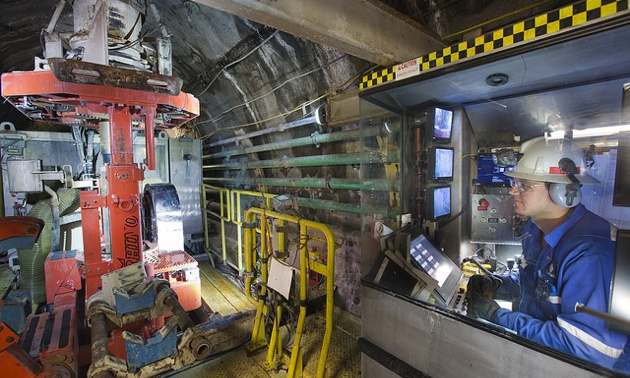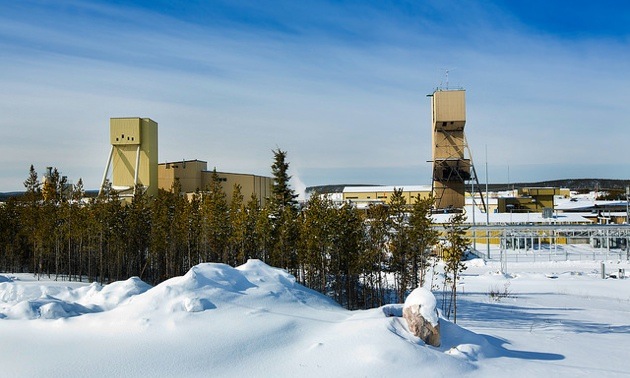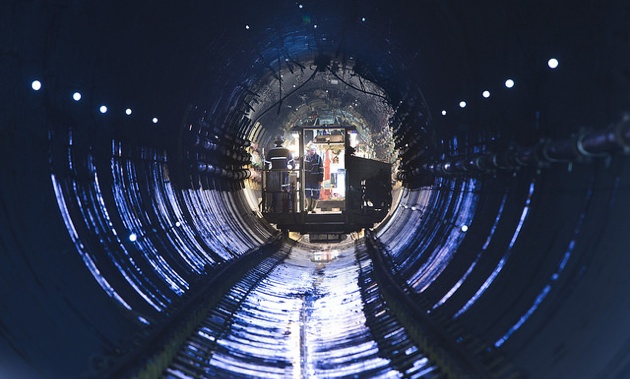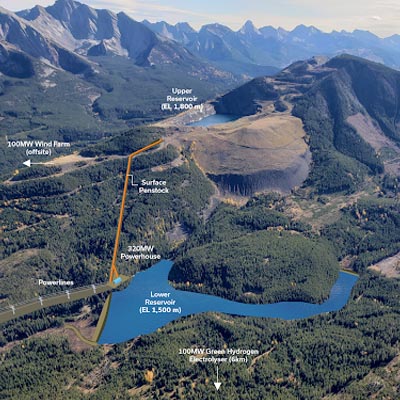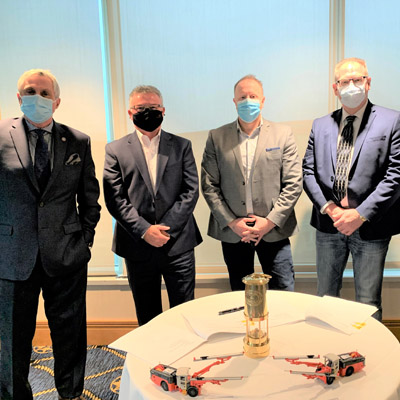Ore production begins at Cigar Lake
This uranium mining operation in northern Saskatchewan is expected to reach full production in 2018
Ore production has begun at Cigar Lake, a uranium mining property in northern Saskatchewan owned and operated by Cameco. The mine is expected to reach full production in 2018.
“Cigar Lake is among the most technically challenging mining projects in the world,” said Tim Gitzel, president and CEO of Cameco. “The start of ore production is a tremendous achievement and I want to thank the many hundreds of people who helped to bring this exceptional ore body into production.”
Cameco, operator and 50.025 per cent owner of Cigar Lake, is transporting ore from the development to the McClean Lake mill, which is operated by Areva Resources Canada Inc., located 70 kilometres northeast of the mine site.
Cigar Lake was discovered in 1981 and operated by Cigar Lake Mining Corporation (CLMC) from 1985 to 2001. Cameco replaced CLMC as operator in 2002 and construction of an underground mining operation began in 2005.
Award-winning engineering
Water inflows delayed construction at Cigar Lake in 2006 and 2008, resulting in clever engineering to remediate the problem. A remotely operated vehicle (ROV) that acted like a mini submarine was brought in to explore the mine shaft and find the source of a new leak that occurred after initial remediation work was completed. The sub was one metre wide and 1.5 metres high, and controlled from above ground using monitor technology.
Because the propeller on the sub stirred up debris and clouded the monitor, the team needed a better solution for locating the source of the leak. Grant Goddard, Cameco’s general manager at the time, realized the source of the leak would expel water one- or two-tenths of a degree colder than the water surrounding it, and that was just enough of a difference to help identify its location.
The sub was fitted with a highly sensitive thermometer and the operator followed the trail of colder water until above-ground crews were satisfied that the leak was not in the mine shaft.
A two-inch by six-inch hole was later discovered in the back of a drift, which had been flooded and drained, eroding the clay where the hole was located. Goddard’s team decided to plug the hole using a Kevlar bag that would be lowered into the shaft and expanded with concrete. They used the ROV to connect surface-operable cables to any debris in the shaft (including an abandoned Bobcat) that had to be removed or relocated in preparation for the bag.
Once the shaft was clear, the crew spent five days on the surface practising the descent and placement of the bag and colour-coding its straps to ensure its correct placement.
To complete the project, the team lowered a “hot stab skid” into the shaft, the bag was lowered, and the ROV was used to spread out the bag on the skid. Concrete was pumped in to permanently seal the leak.
The development’s current water-management strategy includes a robust water pumping, treatment and storage surface system installation, intended to handle the estimated maximum groundwater inflow to the mine.
Bulk freezing
The deposit occurs 410 to 450 metres below the surface, where water-saturated Athabasca sandstone meets the underlying basement rocks. The sandstone that overlays the deposit and basement rocks is water-bearing, with large volumes of water under significant pressure.
Crews will have to freeze the ore zone and surrounding area with a brine solution circulated through freeze holes drilled from both surface and underground to prevent water from entering the mine and to help stabilize weak rock formations.
Once the mining area meets specific ground-freezing requirements, jet boring—a non-entry mining method developed specifically for the Cigar Lake deposit—can begin.
Jet boring
Due to the deposit’s geological setting and high ore grade, it can’t be mined using conventional methods. Cameco developed the jet-boring system (JBS), which involves drilling a pilot hole into the frozen ore body, inserting a high-pressure water jet and cutting a cavity out of the frozen ore.
Slurry is collected from the cavity and pumped to a storage tank, allowing it to settle. Ore is excavated from the storage tank using a clamshell, and is transported to a grinding and processing circuit where it is processed to sand-fine consistency before loading to a tanker truck for transport to the mill.
Once mining is complete, each cavity is backfilled with concrete.
“We are pleased with the performance of the JBS so far and expect to produce two to three million pounds of uranium concentrate by the end of the year,” said Gitzel.
Cameco estimated two jet-boring machines will be mining simultaneously at full production, while another two are deployed in other parts of the mining sequence such as backfilling, moving to the next mining cavity location or offline for maintenance.
According to Cameco, jet boring has not been proven at full production. This is a statement from a company news release: “As we ramp up production, there may be some technical challenges which could affect our production plans."
Uranium from Cigar Lake is expected to fuel clean electricity production around the world for many years while providing quality employment and business opportunities for a generation of Saskatchewan people, said Gitzel.

